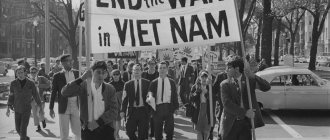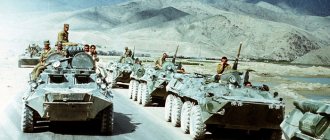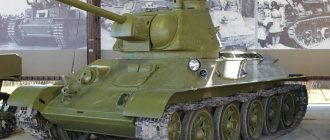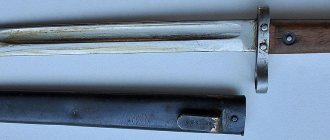History of claims
Spain and Britain almost simultaneously declared their rights to the islands, and for many years they changed hands, but at the end of the 18th and beginning of the 19th centuries, both countries left the islands without giving up their rights to them.
After declaring independence from Spain in 1816, Argentina, then part of the United Provinces of South America, tried to make the Malvinas Islands its own. However, in 1833 the British landed on them with the intention of restoring the power of the British Empire here. They colonized the islands and built Port Stanley, which is now the capital of the Falklands.
In the mid-twentieth century, Argentina again raised the issue of ownership of the archipelago. This time at the UN. However, diplomatic negotiations between Britain and Argentina did not lead to a solution to the issue.
At the same time, there is a known case when Argentine nationalists, having hijacked a plane and taken its passengers hostage, landed on the islands. British authorities sent them back to Argentina, where they received punishment in name only. In fact, at home they were greeted as heroes.
Falklands-82. Argentine suicide
Hit Gibraltar: how the loudest sabotage in the history of Argentina went wrong.
What the Argentine government hoped for when it landed troops on the Malvinas (Falkland Islands) is unclear. But the fact remains: the campaign of the British Expeditionary Force was an unpleasant surprise for the South Americans.
However, all the Argentines participating in the operation were at work: the marines, with the support of special forces from the group of tactical swimmers (Buzos Tacticos), captured the islands, the fleet met the enemy at sea, and the aviation helped as best they could. In short, fun and earning future orders are in full swing.
Against the background of the not very successful “performance” of the Argentine fleet during the conflict, its commander, Admiral Jorge Anaya, came up with a daring thought: “Or maybe BANG?!”
What if a group of desperate guys flies to Europe and blows up some British ship there? It's better to have two! Or even three!
Terrorists in the service of the new regime In general, the training of Argentine combat swimmers was quite good. The unit itself was formed in 1952 with the participation of fighters who once served in the Italian 10th Submarine Commando Flotilla.
And so, in and around the Argentine group of tactical divers, they began to look for suitable candidates for such an adventurous operation. And... they found it.
The main executor of the upcoming sabotage was appointed by the command as a former member of the partisan (terrorist) urban detachment, Maximo Nicoletti. He was responsible for blowing up the yacht of the chief of the federal police, Alberto Villar, and the Argentine Navy destroyer Santisima Trinidad, which was then still under construction.
Having made a deal with the investigation, Nicoletti served several years in prison, after which he was released. He enlisted in military service and was even going to take part in the conflict with Chile over the Beagle Channel in 1978. But then his services were not needed.
Having studied the future task, Maximo took two more former partisans into his group - Antonio Nelson Latorre (another name is El Pelado Diego) and El Marciano, whose real name is still unknown.
The group was to be supervised by the Navy by Captain Hector Rosales.
Yes, it smacked of a desperate adventure! And in case of failure, Argentina would immediately disown any connection with the members of the group. Three were not officially in the service anyway, and Hector Rosales “took a leave of absence.”
You have a good plan, Mr. Admiral! The plan was simple and complex at the same time. The special forces had to fly to Europe in pairs using fake passports. In Spain, two sea mines delivered through diplomatic channels will be waiting for them. Then they will rent cars and drive to the town of Algeciras - from there it’s a stone’s throw to Gibraltar harbor. A few days for reconnaissance, searching for a target - and, in fact, blowing up ships.
Admiral Anaya approved the plan, and on April 24, 1982, the saboteurs took off from Buenos Aires.
When transferring in Paris for a flight to Malaga, Spain, the first trouble occurred: customs officers suspected Latorre’s passport of being a fake. Despite the fact that the documents for the entire group were made by a proven counterfeiter, the speed of preparation of the operation affected: the manufacturer did not have time to find all the necessary materials. They could still withstand a quick passport check, but they couldn’t withstand a more serious one.
However, the French did not find anything else to complain about, and released the entire group to Spain. But just in case, they informed the local security service about the strange guests (and in an amicable way, they pushed the possible problem onto the neighbors).
The authorities give the go-ahead! The saboteurs rented three cars, took their deadly cargo from Madrid and, evading police, arrived in Algeciras.
There they checked into different hotels and pretended to be tourists. We bought an inflatable boat with a motor and fishing rods to pass for bored fishermen. At the same time, under the guise of fishing, it was convenient to explore the harbor of Gibraltar.
There was only one problem - there were no British warships.
At some point, the swimmers even “sought the price” of the tugboat - but then, fortunately for them, in early May, Her Majesty’s frigate “Ariadne” entered the harbor.
It was luck! It was hoped that at six in the evening the saboteurs would leave Algeciras in boats, cross the bay and set charges around midnight. By five in the morning they will return to the Spanish harbor, go to Barcelona, and from there by plane home to Argentina.
All that remained was to obtain the admiral's approval. The same one, following the lead of the politicians, waited for the possibility of a peaceful resolution of the conflict and did not give permission for the action.
But then the British submarine Conqueror sank the Argentine cruiser General Belgrano. This could not be forgiven! And the saboteurs finally received the go-ahead from command.
Despite this, the swimmers lost another week: first they flew “for consultations” to Buenos Aires, then they waited for the Ariadne to return. Finally, on May 10, the ship entered Gibraltar harbor. The attack was scheduled for the next night if the British frigate did not weigh anchor by then.
Having mentally prepared for the operation, the special forces went to bed. But they were soon awakened... by the local police, who burst into their rooms with guns in their hands.
Are you gangsters? No, we are Argentinos! The surprise on both sides knew no bounds. Servants of the law expected to see arms dealers, ETA terrorists, or at least gangsters, but not Argentine competitive swimmers. Which was now waging a war against the eternal enemy of Spain - the British Crown!
Moreover, the police who arrested the saboteurs even confessed to them: if not for the report that had already been sent “to the top” about the successful capture of suspicious persons, the Argentines would have already been released and they would have tried not to interfere with them.
Well, of course, to spoil Great Britain, and with someone else’s hands - it’s just some kind of holiday!
Who gave up the group? This is still unknown. According to one version, a telephone conversation from the embassy in Madrid was intercepted by MI6. British intelligence decided not to get involved in the game itself, but to eliminate the opponents with the help of the local police, “leaking” them information about suspicious persons.
According to another version, the saboteurs were given away by a large amount of... cash and very careful behavior. The car rental employee became suspicious when the same person began to visit him, often changing cars and paying only in cash. A call followed to the police, who were already tense in connection with the upcoming World Cup...
When the higher authorities figured out what had happened, a spicy situation arose. It was impossible to hand over the saboteurs to MI6. But what to do with them then?
To prevent leaks in the press, the Argentines had to be urgently taken out of the country. They were loaded onto the personal plane of Spanish Prime Minister Leopoldo Calvo Sotelo, who happened to be in Malaga at that moment, and taken to the Canary Islands. A transport plane arrived there and soon took the hapless commandos home.
Why was such urgency needed? The fact is that in less than a month Spain was to become a member of NATO. After this, it would become very difficult to transfer the saboteurs to Argentina.
Naturally, even if the British ship had been successfully blown up, the course of the war would not have changed in any way. But the audacity would be appreciated all over the world. Thus, due to a banal accident, the theoretically most high-profile operation of combat swimmers of the late twentieth century failed.
© warhead.su
Current situation
After Britain began oil production on the islands' shelf in 2010, relations between Britain and Argentina deteriorated again. In 2012, Britain increased its military presence in the Falklands (British military bases are located on the islands); Argentina, in turn, accused Britain of militarizing the islands.
On March 10–11, 2013, a referendum was held in the Falklands, at the initiative of local authorities, in which 98.8% of local residents with the right to vote were in favor of the Falklands remaining an overseas territory of Great Britain. The turnout was very high - approximately 92%. At the same time, the population of the islands is small - now just over 2.8 thousand people live here, most of them of British origin.
However, Argentina has already announced that the results of the referendum will not affect the dispute over the ownership of the islands, since the referendum was not approved by the UN. Thus, even the will of the people did not put an end to this story.
Causes of the Cuban Missile Crisis
As a result, we can identify the following reasons for the outbreak of the Caribbean or, as it is also called, the Cuban crisis in 1962:
- Cold War. The impossibility of a direct collision between the USA and the USSR led both powers to struggle for influence in certain parts of the globe. Cuba has become another front of confrontation between two systems.
- Consequences of the Cuban Revolution. Land reform and the persecution of US supporters in Cuba led the United States to attempt to overthrow Castro's rule. Cuba was forced to turn to the USSR for help.
- Arms race. The deployment of missiles in Turkey became the reason for the Soviet leadership to send their own missiles to Liberty Island.
Visa
Entry rules. A UK visa is required for entry. Visas for stays of up to 4 months are required for everyone except citizens of Andorra, Argentina, Brazil, Chile, Cyprus, Iceland, Israel, Liechtenstein, Malta, New Zealand, Norway, Paraguay, San Marino, Switzerland and Uruguay. Citizens of the USA, Canada, Australia and New Zealand are generally allowed to stay on the islands for up to six months without a visa.
In other cases, to obtain a visa, you must submit an application form in English, a passport valid for at least 6 months, 2 passport-size photographs and provide evidence of sufficient funds for an extended stay, as well as present a progressive air ticket.
The processing time for documents is within 24 hours if you contact the embassy directly and 2-4 weeks for postal items.
Please note: all visitors to the islands, even nationals of the above countries, must obtain permission to visit Falkland Islands from the Falkland Islands Government Office in London or the nearest British consulate.
For tourist travel, permission can be obtained upon arrival from the Falkland Islands Immigration Office (Ross Road, Port Stanley, telephone: 27340; fax: 27342).
To obtain a permit, you must have round-trip tickets, proof of sufficient financial funds, and proof of commitment to stay on the island.
For all types of travel there is one type of visa costing £5, valid for a period of 6 months from the date of issue for a stay of up to 4 months. Instructions and visa requirements are subject to change without notice, so it is recommended that you contact the appropriate diplomatic or consular authorities before travel. Customs regulations. There are no restrictions on the import and export of local and foreign currency. Duty-free import is allowed: cigarettes - up to 200 pcs., or cigars - up to 50 pcs., or tobacco - up to 250 grams, alcoholic beverages with a strength of more than 22 degrees - up to 1 liter, with a strength of less than 22 degrees - up to 2 l., perfumes - up to 50 ml., eau de toilette - up to 250 ml., souvenirs and gifts - worth no more than 32 pounds sterling. The import of drugs, weapons (including knives with pop-up blades), counterfeit coins and banknotes, obscene materials, meat, poultry and products made from them, radio transmitters, plants, all types of live birds and bird eggs is prohibited.
Hotels, hotels, prices
Alto Andino Hotel*** Location. Alto Andino is located in Ushuaia, close to End of the World Museum. Additional area points of interest include Glaciar Martial. Hotel Features. Alto Andino features a restaurant and a convenience store. There is a bar in the hotel lobby on site. Room service is available. Free wireless Internet access in public areas. The hotel features tour assistance, ticket reservation services, and tour assistance. Free parking is available for guests. Additional property amenities include a rooftop terrace and an elevator (lift). Numbers. There are 18 guestrooms at Alto Andino Hotel with safes. Wireless Internet access is provided. Each room has a TV. The following is offered: Free Internet access. Price from 4955 rub. for 1 night.
Hotel Del Bosque Apart Hotel*** Location. Del Bosque Apart Hotel is located in Ushuaia, close to End of the World Museum. Additional area points of interest include Glaciar Martial. Hotel Features. Del Bosque Apart Hotel features a restaurant and a bar in the hotel lobby. Room service is available. Additional property amenities include ski storage and laundry facilities. Numbers. The 0 guestrooms at Del Bosque Apart Hotel have safes. The rooms have a refrigerator and kitchen equipment. Wireless Internet access is provided. Each room has a TV.
The following is offered: Free Internet access. The hotel offers airport transfers (surcharges may apply). Guests are required to inform the property 48 hours in advance using the contact information on the booking confirmation email. There is no room charge for children under 3 years of age if they are staying in the same room as their parents or guardians using existing bedding. The hotel does not allow pets, including service animals. Price from 6849 rub. per night.
Hotel Hosteria Les Eclaireurs** Location. Hosteria Les Eclaireurs is located in Ushuaia, close to End of the World Museum and Glaciar Martial. Additional area points of interest include Tierra del Fuego National Park. Hotel Features. Hosteria Les Eclaireurs features tour assistance, ticket services, concierge services, and tour assistance. Free wireless Internet access in public areas. The hotel has designated smoking areas. Completion date for complete hotel renovation: May 2011. Rooms. The 14 guestrooms at Hosteria Les Eclaireurs feature minibars and safes. All rooms are entered from an external corridor. Beds have down blankets and premium bedding. Bathrooms feature shower/tub combinations with rainfall showerheads. Bathrooms also include bidets, complimentary toiletries, and hair dryers. Complimentary high-speed wired and wireless Internet access is provided. Guestrooms provide desks and phones. Each room has 26cm LCD TVs. Features include cable channels and complimentary Internet access. Iron, ironing board and wake-up service available upon request. Room service is provided daily. All hotel rooms are non-smoking. Price from 3749 rub. per night.
Strengths of the parties
The forces of the parties at the start of hostilities in the South Atlantic looked as follows. Argentina had a fairly large air force, among which there were many modern fighter-bombers made in France. The military leadership hoped to hold back the onslaught of the British fleet with the help of attack aircraft. The Argentine Navy looked more like a museum exhibit. Most of the ships were of old construction. The flagship of the Argentine fleet, the military-built cruiser Admiral Belgrano, and the aircraft carrier Veintisinco de Mayo, also built in England during World War II, could with great doubt be called combat-ready ships.
Admiral Belgrano
The Argentine land army, although numerically quite large and well trained, could not take full part in military operations due to a lack of delivery vehicles. It is important to note that despite the overall quantitative superiority of the Argentine armed forces, the military command did not have a qualitative superiority. Even in this theater of war, Argentina could not create an advantage over the British Expeditionary Forces in either aviation or naval forces.
Super Yetandar
Great Britain assembled quite large forces for an armed response. It was necessary not only to prepare modern warships for a long voyage, but also to remove a number of other military vessels from storage. Two operational-tactical formations were formed:
- TF317 - a formation of surface ships led by two aircraft carriers, Hermes and Invincible;
- TF324 – connection of submarine forces.
Both formations went to sea on April 5, three weeks after the crisis began, heading for the South Atlantic. In total, the British fielded up to 40 ships of various classes to participate in Operation Corporate, among which the strike force included submarines, carrier-based aircraft, destroyers and frigates.
Aircraft carrier
The ground component was represented by 2 thousand British military personnel recruited from the 40th, 42nd British special forces brigades and soldiers of the 3rd Parachute Regiment. In the future, the British “commandos” for operations on land were to be supported by a 10 thousand expeditionary force.
Landing barges of Lieutenant Colonel Siebel
During the Battle of Leningrad, the Germans kept their eyes on Lake Ladoga, which was controlled by the Luftwaffe's 1st Air Fleet under the command of General Alfred Keller. Air strikes were methodically carried out on ports, supply bases, civilian ships and warships. On September 1, 1942, three Ju-88As destroyed the flagship of the Ladoga military flotilla, the patrol ship Purga, dropping 24 bombs on it.
Encircling the lake along the perimeter from two deep flanks, German-Finnish troops controlled almost the entire water area of Ladoga, with the exception of its southern part. By the summer of 1942, the headquarters of the 1st Air Fleet came to the conclusion that air strikes were not enough, it was necessary to capture small Soviet islands in order to, if not disrupt, then interfere with transportation to Leningrad.
Suho Island today
Photo: Yuri Matseevsky / LIGHTHOUSE.GUIDE
The first choice fell on Suho, a tiny artificial rocky island in the shape of an irregular horseshoe, the main attraction of which was a stone lighthouse built in 1891. Sukho, which was located 37 kilometers north of Novaya Ladoga, where the main base of the Ladoga military flotilla was located, served as an important stronghold for the movement of Soviet ships. However, there were no troops on it.
"Magic fire" to burn Leningrad
By the spring of 1942, Berlin came to the conclusion that the tactics of taking Leningrad by starvation were not producing the expected results. Despite the endless shelling, bombing, hunger and cold, the city’s defenders were not going to capitulate, diverting a large number of combat-ready German formations needed in other directions.
Soldiers of the Wehrmacht assault group in battle on the outskirts of Leningrad
Photo: “War Album”
On April 5, 1942, Hitler issued Directive No. 41, outlining plans for the summer campaign on the Eastern Front. In it, he ordered troops in the south to make a breakthrough in the direction of the Caucasus, and in the north “to achieve the fall of Leningrad and establish contact with the Finns by land.”
Thus, the idea of an assault was revived again. The Fuhrer entrusted its implementation to Field Marshal Georg von Küchler, who replaced Leeb as commander-in-chief of Army Group North.
Record pace of Army Group North
According to the German attack plan on the Soviet Union, Barbarossa, the capture of Leningrad and Kronstadt was supposed to force the Soviet Baltic Fleet to stop fighting. It was emphasized that only after the capture of Leningrad the Wehrmacht “should begin operations to capture Moscow as an important center of communications and military industry.”
Leningrad, the second largest Soviet city, also produced critical defense products—its Kirov plant produced heavy KV tanks. Ideological motives also played an important role - the capture of the city in which the October Revolution of 1917 took place would have played a serious role in the demoralization of the Red Army and the population of the USSR.
German motorcyclists at a road sign 75 kilometers from Leningrad
Photo: Bundesarchiv
At first everything went like clockwork. In the first three weeks of the war, the pace of advance by Field Marshal Wilhelm von Leeb's Army Group North was record-breaking compared to Army Group Center and, especially, Army Group South. The 56th motorized corps of General Erich von Manstein advanced from the border by 675 kilometers, the 41st motorized corps of General Georg Hans Reinhardt by 750 kilometers.
On July 8, 1941, the Chief of the General Staff of the German Ground Forces, General Franz Halder, wrote in his personal diary:
The Fuhrer's decision to raze Moscow and Leningrad to the ground is unshakable in order to completely get rid of the population of these cities, which otherwise we will then be forced to feed during the winter
Beginning of the confrontation
Why did 1982 become a hot spot in relations between the two countries? The reason is simple and banal, the unfulfilled political ambitions of the Argentine authorities and adventurism. The military junta that came to power in Argentina in less than 8 years of its rule brought the country to the brink of financial and economic collapse. The new leader of the country, General Leopoldo Galtieri, saw only one way out of the current situation in the country - a victorious and short-term military adventure. Only due to external danger and on the wave of national patriotism was it possible to distract the country's population from social issues, preventing the premature fall of the regime.
Galtieri
The Falkland Islands, lying just five hundred kilometers from the coast of Argentina, were chosen as a convenient target for subsequent military expansion. The country's top leadership hoped for a successful solution to the age-old territorial dispute between England and Argentina by force. The bet was made on the fact that England was also not going through the best of times in the early 80s. In addition, the question involuntarily arose whether the British Lion would want to enter into an armed conflict over islands located 12,000 km from the metropolis.
It was supposed to land Argentine special forces on East Falkland, displace and force the English garrison on the islands to surrender. The operation was planned as bloodless with the hope that the British government, faced with a fait accompli, would be forced to accept the loss of the islands. In reality, everything turned out completely differently.
Shower of debris and stones
Around seven o'clock in the morning on October 22, 1942, it was foggy and quiet around the island. The battery commander and commandant of the island, Senior Lieutenant Ivan Gusev, went down to the shore of the bay to wash and shave. Meanwhile, his subordinates were preparing for breakfast. Suddenly, the signalman on watch reported that a caravan was observed to the south of the island: 14 landing boats, followed by 24 self-propelled landing barges.
A shell exploded a few meters from the shore. "Anxiety!" - Gusev shouted and ordered the radio operator to report to the headquarters of the Ladoga military flotilla that the enemy was shelling the island. The sharp blows of the bell notified the garrison of the need to take up combat positions: the artillerymen concentrated at three 100-mm naval guns, riflemen and machine gunners from firing points vigilantly monitored the situation.
Commander of the coastal battery on Suho Ivan Gusev
Photo: “Immortal Regiment”
Gusev himself quickly ran up to the command post located on the upper platform of the lighthouse and, having received initial firing data from the rangefinders, ordered the third and second guns to open fire. No targets have yet been observed in the sector of the first gun. Five minutes after the start of the shelling, the coastal battery entered into battle with enemy ships.
The shots of the naval artillery, whose combined firepower was many times greater than the fire of the Gusevites, crushed boulders of stone, causing a powerful shower of fragments and stones, which did not allow the defenders of Suho to raise their heads.
Gusev later recalled:
The island shook from the explosions of enemy shells and shots from our guns. Two tall wooden pillars supporting the antenna of the battery radio station were swept away by fire in the very first minutes of the battle. The thought involuntarily flashed: “Did the radio operators manage to transmit a report about the enemy attack on the island to the flotilla headquarters?”
“Death overtook people everywhere”
The bread ration for workers in hot shops, which amounted to 1000 grams of bread on July 18, 1941, decreased on November 20 to 375 grams. For dependents and children under 12 years of age, it fell from 400 to 125 grams. Famine began in the city.
The situation was slightly improved by the liberation of Tikhvin on December 9, 1941 and the start of operation of the ice route along the frozen Lake Ladoga. The daily ration for workers increased to 500 grams of bread, and the norm for children and dependents increased to 200 grams.
For residents of Leningrad, the period from mid-November 1941 to the end of January 1942 turned out to be the most difficult during the entire period of the blockade - imports through Ladoga were carried out in small quantities, and internal resources were exhausted. In January, thirty-degree frosts hit, and the city water supply froze.
Residents of besieged Leningrad carrying the body of a deceased person on a sled, 1942
Photo: Boris Kudoyarov / RIA Novosti
Water for Leningraders was no less important than a meager bread ration. Siege tea, that is, ordinary boiling water, warmed us in cold weather and gave the illusion of satiety. They used water to cook soup from vegetable oil production waste, and also to make jelly from wood glue.
The Commissioner of the State Defense Committee for food supply for Leningrad and the Leningrad Front, Dmitry Pavlov, recalled:
Acute hunger was making itself felt more and more, young and old, men and women were dying. People's legs and arms became weaker, their bodies went numb, numbness gradually approached their hearts, and the end came. Death overtook people everywhere
The number of city residents who died from December 1941 to February 1942 was more than 252 thousand people.
Cars moving along the Road of Life, April 1942
Photo: Alexander Brodsky / RIA Novosti
Food, ammunition, military equipment, medicines, and fuel were delivered to the besieged city. In the opposite direction they were transporting machines and mainly people - children, women, the elderly and the sick. During the winter of 1941-1942, more than 514 thousand people were evacuated to the mainland. From the second half of May 1942, when navigation began on Ladoga, until November 1942, another 448 thousand residents were taken out of Leningrad.











